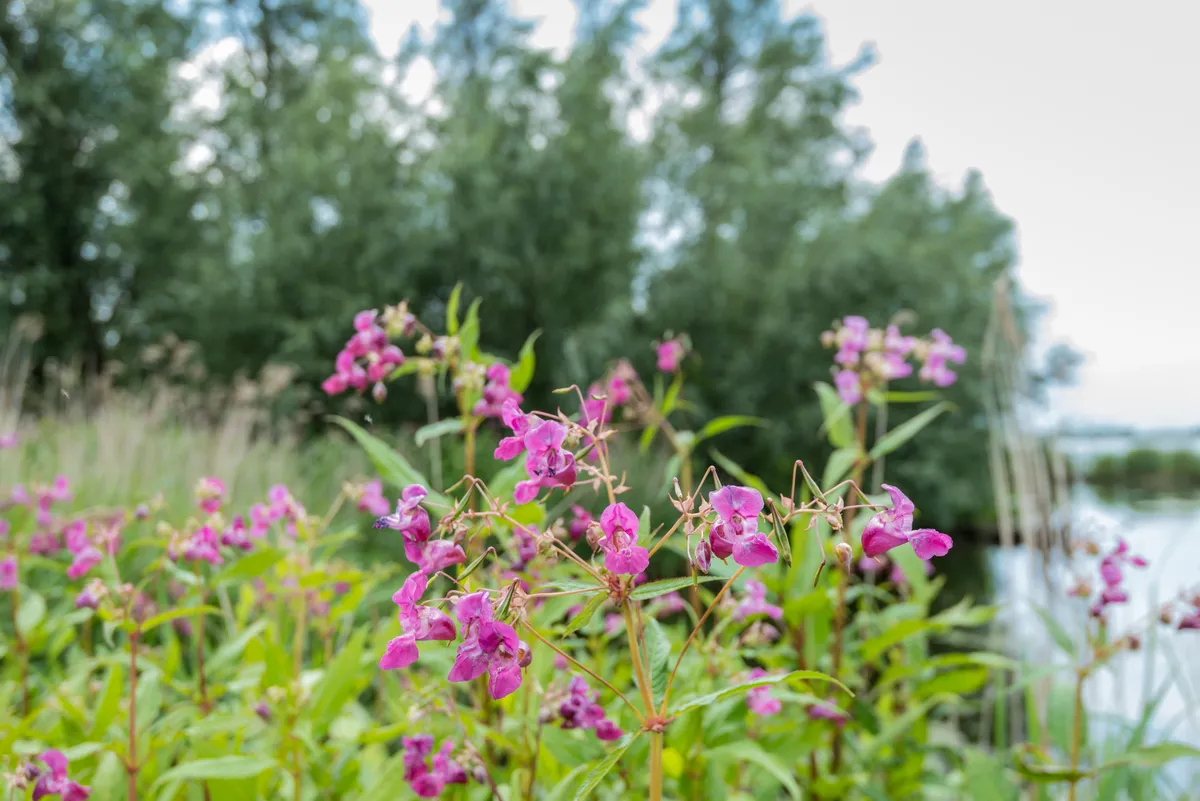Robin Jones is a senior technology officer at Slimbridge Wildfowl and Wetlands Trust. He is also an avid runner and has been hailed as a wildlife hero after all but eradicating the invasive Himalayan balsam on his daily canal-side jogs in Gloucestershire.
Jones, who took up daily running in 2012, has since pulled up nearly 6000 of the damaging, non-native plants.
In doing so he has covered nearly 286km and his commitment to eliminating the plant has earned him a Marsh Impact Volunteer Award from the Canal and River Trust, as well as helping him stay active.
“I wouldn’t go for lunchtime runs as half as much as if I didn’t think there was balsam to be stopped. It’s keeping me fit,” says Jones.
He started targeting the weed when he realised that its steady progression along the canal would eventually reach Slimbridge, an important wildlife haven and Site of Specific Scientific Interest (SSSI).

“The plant’s small seeds are spread by an explosive head which can project them several metres away, meaning they spread like wildfire,” explains Jones.
“I knew I had to take action before it ended up in the grounds of Slimbridge and thankfully it’s paid off.”
The prolific plant was first brought to the UK by explorers in the early 19th century, who were drawn to its attractive ‘policeman’s helmet’ pink-purple flowers.
Beautiful though it may be, it is however deadly for native plant species – aggressive seed dispersal coupled with high nectar production allows it to grow quickly into dense thickets which overshadow and outcompete other, less productive plants.

As well as altering the ecological balance and character of wetland habitats, it also erodes riverbanks, leaving them unprotected from flooding.
But thanks to his hard work, the harmful plant will not be wreaking habit on the precious reserve. He is not stopping there however, and has now turned his attentions to the orange balsam, another invasive species hailing this time from North America. Unfortunately this has already reached Slimbridge.
“These plants may look pretty but they pose a real danger to our native species and now WWT is working on removing it from the reserve,” says Jones.

His success in eradicating the Himalayan species, just through his lunch-break jogs, has however given him optimism.
“It just goes to show you the power of individual people taking action. Everyone has the potential to make a difference.”

Main image: Robin on one of his lunchtime canal runs. © Wildfowl and Wetlands Trust
